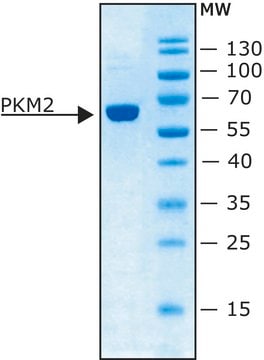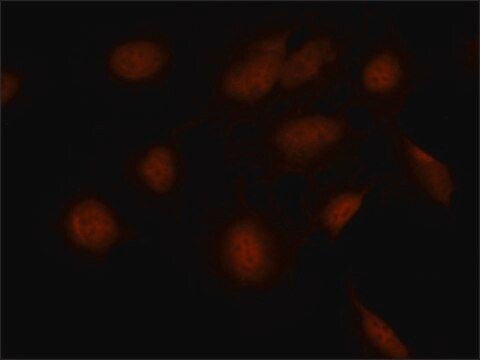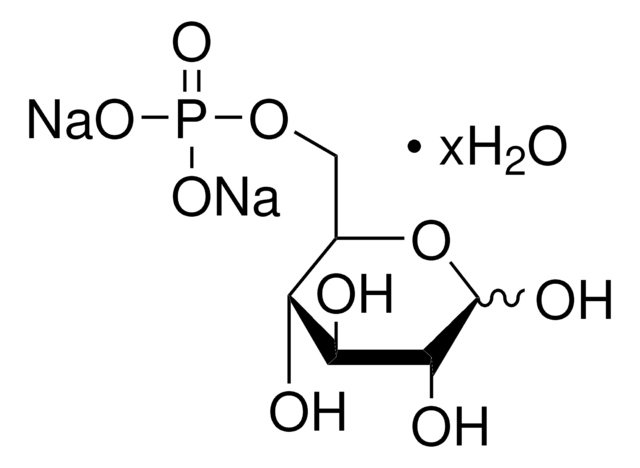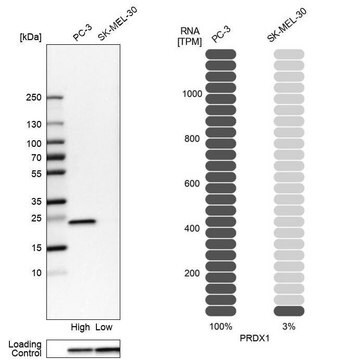SAB4200105
Anti-PKM2 (C-terminal) antibody produced in rabbit
~1.5 mg/mL, affinity isolated antibody
동의어(들):
Anti-CTHBP, Anti-OIP3 (OPA-interacting protein 3), Anti-PK3, Anti-PKM, Anti-Pyruvate Kinase, MUSCLE (isoform M1), Anti-TCB, Anti-THBP1 (thyroid hormone-binding protein, cytosolic)
About This Item
IP
WB
indirect immunofluorescence: 2-4 μg using HeLa cells
western blot: 1-2 μg/mL using L8 and C2C12 cell lysates
추천 제품
생물학적 소스
rabbit
결합
unconjugated
항체 형태
affinity isolated antibody
항체 생산 유형
primary antibodies
클론
polyclonal
양식
buffered aqueous glycerol solution
분자량
~60 kDa
종 반응성
rat, human, mouse
농도
~1.5 mg/mL
기술
immunoprecipitation (IP): 2-4 μg using A549 cell lysates
indirect immunofluorescence: 2-4 μg using HeLa cells
western blot: 1-2 μg/mL using L8 and C2C12 cell lysates
배송 상태
dry ice
저장 온도
−20°C
타겟 번역 후 변형
unmodified
유전자 정보
human ... PKM2(5315)
mouse ... Pkm2(18746)
rat ... Pkm(25630)
일반 설명
특이성
애플리케이션
생화학적/생리학적 작용
물리적 형태
면책조항
적합한 제품을 찾을 수 없으신가요?
당사의 제품 선택기 도구.을(를) 시도해 보세요.
Storage Class Code
10 - Combustible liquids
Flash Point (°F)
Not applicable
Flash Point (°C)
Not applicable
가장 최신 버전 중 하나를 선택하세요:
문서
We presents an article about the Warburg effect, and how it is the enhanced conversion of glucose to lactate observed in tumor cells, even in the presence of normal levels of oxygen. Otto Heinrich Warburg demonstrated in 1924 that cancer cells show an increased dependence on glycolysis to meet their energy needs, regardless of whether they were well-oxygenated or not.
자사의 과학자팀은 생명 과학, 재료 과학, 화학 합성, 크로마토그래피, 분석 및 기타 많은 영역을 포함한 모든 과학 분야에 경험이 있습니다..
고객지원팀으로 연락바랍니다.
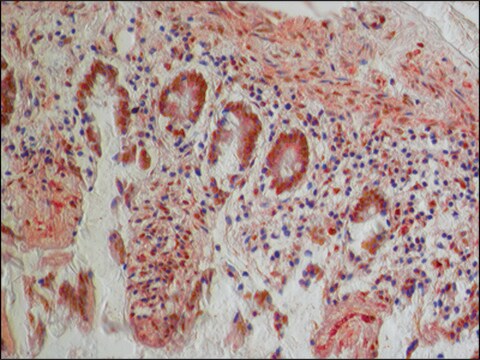
![Anti-phospho-TDP-43 [pSer409] antibody produced in rabbit ~1.0 mg/mL, affinity isolated antibody](/deepweb/assets/sigmaaldrich/product/images/407/478/bcd6d544-d187-42ed-8c1e-98bf709b4da7/640/bcd6d544-d187-42ed-8c1e-98bf709b4da7.jpg)
